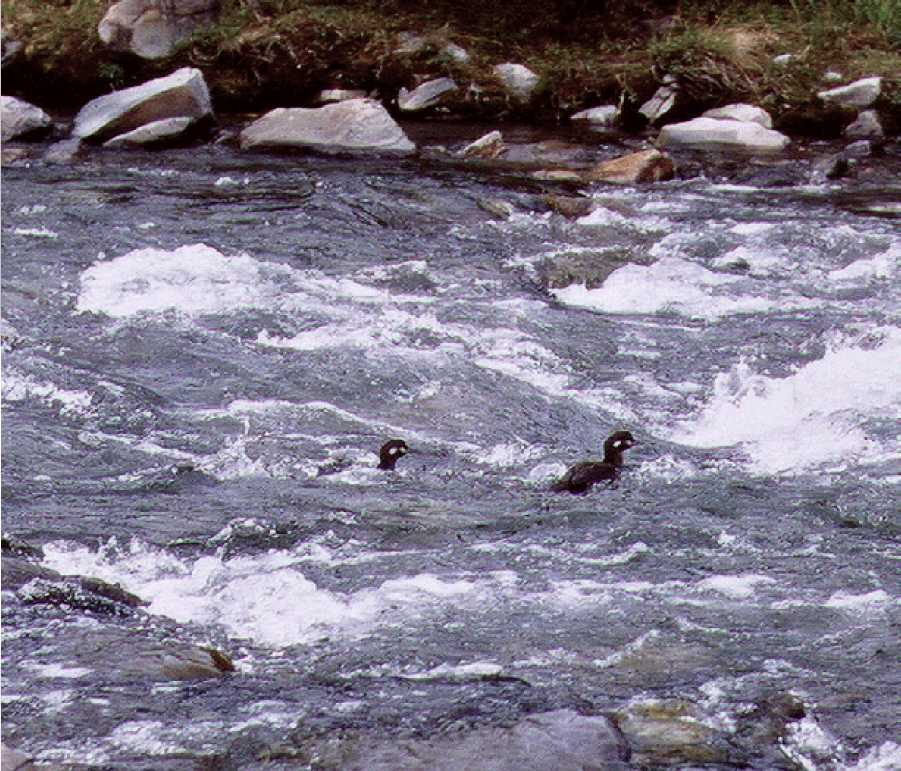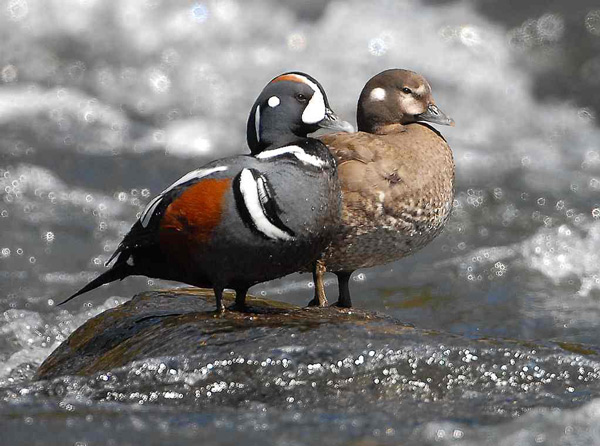
Beth MacCallum spoke at the September 2014 SeaDuck Conference in Reykjavik, Iceland, on her work with on the Harlequin Duck Program.
Presentation Abstract
Prefledging waterfowl are vulnerable to an array of mortality agents and are often spatially restricted during this growth period. Understanding habitat requirements at each stage of development is important for understanding dynamics of the full reproductive cycle. Factors affecting habitat use by brood-rearing Harlequin Duck females at the home range scale were investigated in the east slope of Alberta’s Rocky Mountains. Generalized linear models with a logit-link function were used to assess the effect of environmental parameters on Harlequin Duck brood presence (n = 38) and brood absence (n = 38). A set of models were built a priori and ranked by Akaike Information Criterion (AICc). Models relating to foraging conditions indicated the probability of a site being used for brood-rearing increased with total invertebrate biomass. Models relating to predator avoidance indicated the probability of brood use was high when percentage of channel overhang is close to 0, but declined with increasing overhang, shrub cover in the 1st meter, bank relief and more exposed bank. Models testing whether the selection of brood-rearing habitat optimizes foraging conditions and predator avoidance indicated that models with variables relating to predator avoidance had more support than models based on foraging conditions or models combining foraging conditions and predator avoidance. We concluded that Harlequin Duck females select habitat for brood-rearing based on the physical ability of the ducklings to use predator avoidance features. Invertebrate biomass was important but not as important as presence of predator avoidance features in distinguishing brood use from brood non-use areas.







